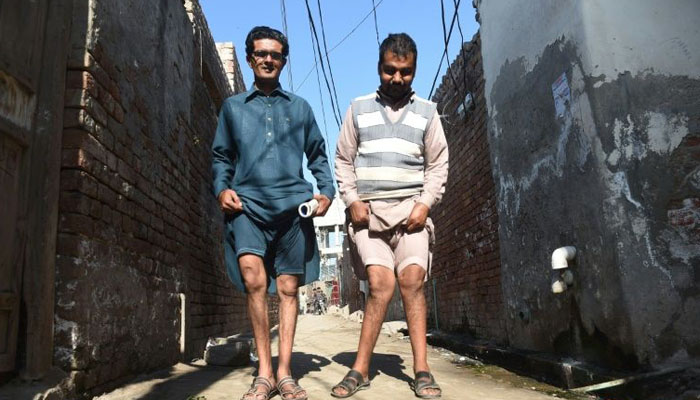INSUBCONTINENT EXCLUSIVE:
began to falter, a condition doctors have blamed on polluted water in a Pakistani region infamous for the deformities that afflict many of
its people.Too weak to carry his own schoolbag, he was taken to hospital, where doctors said water laden with toxic levels of arsenic,
fluoride, minerals and various metals was to blame."It was a big blow to me as I had to quit my studies to get treatment," Ali told AFP on
drink.According to the Lahore Chamber of Commerce and Industry, 90 percent of factories in and around the city dump their waste untreated in
provide more water polluted with arsenic
Meanwhile Ali and other residents of the area have paid a heavy price, with activists saying 200 other children have suffered bone and
dental deformities since 2000."Now these children are grown men and women, but they remain hidden in their houses
They are not getting any marriage proposals because people say that their bones are deformed," he says.Ali, now 32, remains frail, his teeth
His is permanently disabled, with one leg shorter than the other, and has difficulty walking.His village Kot Assadullah and neighbouring
said 26-year old Muhammad Mukhtiar, who tends a shop in the village.When AFP visited recently men, women and children carrying cans and
bottles were queueing at a new solar-powered water filtration plant paid for by a charity.A government-funded filtered water plant is also
Khalid Jamil Akhtar, a private clinician who has been visiting the area for the provincial government.Arsenic, he said, can cause vomiting,
diarrhoea and stomach problems, while also affecting the liver, lungs, kidneys and eventually the entire gastrointestinal tract.Polluted
water could also result in neuropathy -- a nerve dysfunction that can lead to deformity-causing numbness or weakness in the limbs.Dr Akhtar
said most of the patients he saw were suffering from neuropathy, primarily caused by "contaminated water, by the toxins of the factories in
the area" -- though he added that some cases could be caused by genetics, without giving a breakdown.Arsenic -- typically found in
groundwater contaminated by untreated industrial, municipal and agricultural waste -- in particular is a source of increased concern.A study
conducted by Swiss expert Joel Podgorski using 1,200 groundwater samples throughout Pakistan said that up to 60 million people were at risk
of arsenic poisoning.The study, published last year, identified high concentrations of arsenic along the Indus River and its tributaries,
with "hot spots" around the populated areas of Lahore and the southern city of Hyderabad.The Pakistan Council of Research in Water (PCRWR)
disputes the findings, arguing that the sample size was too small, but agrees there is an arsenic problem."We have done tests on up to
60,000 samples from Lahore to lower Sindh under a study being carried out since 1999 and have found arsenic at many places," said Lubna
Bukhari, head of water quality for the PCRWR.It also says that water monitoring projects carried out since 2012 show that between 69 and 85
become the most water-stressed country in the region by 2040, according to the UN.But there is no national strategy for cleaning up what
water there is and much less for conserving it, with environmental matters left in the hands of provincial authorities.Twenty years have
already passed since deformities started appearing in Kalalanwala, and little change has taken place.There, a 25-year-old labourer named

